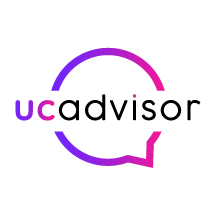
14 Nov What is Operator Connect? Microsoft Teams Calling
Microsoft Teams is probably one of the biggest names in the UC landscape right now. Though it might have started life as a simple tool for collaboration and productivity, the solution has quickly emerged as a fully-featured ecosystem for calling, communication, and even contact centre support.
Of course, to access the full functionality of Microsoft Teams as a tool for UCaaS, companies need to choose how they’re going to set up access to the PSTN (Public Switched Telephone Network).
While it is possible to access a full communication stack from Microsoft, with the Microsoft Business Phone packages, these solutions do have some limitations. To provide an alternative to its own monthly dialling plans, Microsoft introduced two alternative ways to connect Teams users to the PSTN: Direct routing and Operator Connect.
Today, we’re going to cover everything you need to know about Operator Connect.
The Path to Operator Connect
In recent years, the changing landscape, and a rise in remote and hybrid working strategies has prompted a change in the way we access communication technology. Increasingly, companies are moving away from traditional telecoms and UCaaS providers, and searching for more convenient ways to embed communication capabilities into the tools their teams already use.
Microsoft Teams has emerged as something of a central work hub for many of the 270 million monthly active users accessing the service on a regular basis. Not only does it offer integration with a host of tools team members already use, like Microsoft 365 and Outlook, but it provides a convenient environment where hybrid teams can connect and share ideas from anywhere.
Adding PSTN connectivity to this environment allows companies to essentially design a single-pane-of-glass environment, where team members can collaborate, track information, and access a range of other critical tools in the same place. To facilitate this shift to a new era of the “communication stack”, Microsoft introduced calling plans, offered via per-month, per-user packages.
While these packages have their benefits for some small companies, many larger organizations find the plans too restrictive, and not geographically diverse enough to suit their scaling needs. As a result, Microsoft decided to provide an alternative solution in the form of “Direct Routing”.
Direct Routing quickly became the go-to solution for many business leaders, with only around 20% of companies choosing to implement UCaaS functionality into Teams through a calling plan. With direct routing, brands have a way to link their platform to the PSTN through an SBC provider and a company offering a dedicated service.
Direct routing offered companies access to telephony capabilities in more countries than you’d usually get with a call plan, as well as greater phone number control, and access to various flexible options (like contact center capabilities). However, direct routing had its limitations too. Companies accessing calling functionality through direct routing still needed to manage, configure, and maintain SIP trunks, troubleshoot common problems with SBC providers, and deal with complex integrations.
As a result, Microsoft decided to explore another, more simplistic route to “Bring Your Own Carrier” functionality in Teams: Operator Connect.
What is Operator Connect?
Operator Connect is a secondary alternative to the standard calling plans from Microsoft Teams, which allows companies to connect their preferred communication provider into the Teams space. The solution aims to solve some of the most common problems companies face with direct routing, while still ensuring businesses can bring their existing PSTN carrier, or another approved carrier into their UCaaS stack.
The USP of Operator Connect is its simplicity. With this environment, Operators can integrate their billing and phone number management services into the Microsoft ecosystem through the use of dedicated APIs. This means end-users can control all of the aspects of their Teams UCaaS environment within Teams, rather than using a third-party solution.
Microsoft allows users of Operator Connect to activate their new connection quickly and conveniently with a dedicated “Operator” tab in Teams. Within this tab, administrators will have access to all the tools they need to quickly assign numbers to users without going through external providers. Operator Connect means you can manage your entire communication stack within Teams.
As an added bonus, Operator Connect allows you to pay only for what you use in terms of calling services, rather than paying per user. While direct routing is still one of the most popular tools on the market for leveraging the full functionality of Teams as a UCaaS tool, Operator Connect can have a lot of benefits too.
The Benefits of Operator Connect
Operator Connect is more straightforward for the majority of companies, because of a unique “managed service” approach to PSTN connectivity. There are already dozens of Operator Connect partners available to choose from, and new potential options are emerging all the time, as Microsoft continues to develop new connections.
Operator Connect even provides partners with access to direct peering between the SIP trunking infrastructure they use and the Teams platform, which ensures a stronger level of reliability and business continuity.
With Operator Connect, you don’t have the same concerns when it comes to purchasing your own SBC technology and managing numbers through complex PowerShell connections. The partner you choose will be responsible for handling all of your UCaaS functionality on your behalf.
For those looking to make the most of their UCaaS investment in Microsoft Teams, Operator Connect means you can:
- Simplify your UCaaS deployment: Deployment is much simpler with Operator Connect than with direct routing. It takes a matter of minutes to connect everything and get phone numbers assigned to users. You handle the whole process within the Teams admin environment too, so you don’t have to have any PowerShell or DevOps knowledge.
- Keep your carrier relationships: If you already have a connection with a carrier which results in a better deal for your communication technology, you can stay with your chosen provider. Like with direct routing, you’re free to continue using any provider you choose, as long as they are approved within the Operator Connect program.
- Reduce spending: You can actually save a decent amount of cash with Operator Connect. First, you won’t need to spend a fortune on complex hardware solutions like SBC technology that you have to purchase yourself. You’ll also be less likely to have to pay for developer professionals and maintenance experts to help manage your PSTN connections.
- Streamline UCaaS management: The operator-managed approach to communications offered by Operator Connect means you can handle everything much more easily. Your PSTN and SBC technologies are both managed by the operator, and you can control everything from the admin center, rolling out new numbers and features in no time.
How Does Operator Connect Differ from Direct Routing?
On the surface, Microsoft’s Direct Routing and Operator Connect options for PSTN connectivity can seem very similar. They both provide an easy way to bring an alternative communication provider with you into the Microsoft UCaaS ecosystem, and avoid the issues of Microsoft calling plans. However, there are some major differences.
With Microsoft Direct routing, you get a flexible communications environment you can customize with support from the right vendor. There is a huge selection of vendors to choose from, and carriers all around the world, as well as dedicated SBC access, and support for advanced integrations like call recording and analytics software.
With Operator Connect, you get communication features enabled by a specific selection of pre-approved carriers, which you can manage from a convenient portal within Teams. There’s no need for coding knowledge, and you can access a host of high-quality security and reliability features, but there is a little less flexibility available.
The Evolution of Operator Connect: Developing Features
As a relatively new concept in the Microsoft Teams UCaaS environment, Operator Connect is still evolving at an incredible pace. There are various additional features of Operator Connect available today, with further advancements potentially on the horizon.
For instance, at the same time they announced general availability of Operator Connect, Microsoft also introduced “Operator Connect Conferencing”, which is similar in a lot of ways to the standard Operator Connect experience. The solution comes with the same admin environment for controlling your connections as the original service, as well as direct peering functionality for better reliability.
The difference is the focus is on conferencing, rather than PSTN connectivity. Operator Connect conferencing allows users to implement dial-in numbers into their Teams environment, using the conferencing bridge provided by Microsoft. This means your users can dial into Teams meetings, and ensure everyone in the workforce has direct access to each conference.
Other features introduced recently include:
Operator Connect Mobile
Operator Connect Mobile is still in the very early stages of being introduced to the Microsoft ecosystem, so there isn’t a lot of information available on how it’s going to work. The solution was announced alongside Microsoft’s delivery of the 2022 Work Trend Index report.
Operator Connect Mobile is essentially a Fixed-Mobile Convergence solution which allows your mobile device to become a Teams phone endpoint. The service means you can make calls across both data and voice networks, and switch back and forth between devices easily if you’re moving between different workplace environments.
The Operator Connect Mobile experience is designed to be device and network agnostic, so workers can maintain a single number across desk phones, mobile phones, and Teams applications. Teams calls can also be made in dial pads outside of the Teams in-app dialler.
Operator Connect Mobile isn’t the same as a standard call forward/ Sim ring solution, as the mobile PSTN connectivity will be delivered via Teams first, then through the relevant operator connect solution. This new offering means you get a more simplistic “Teams endpoint” in the mobile world, with a call history, and easy transitioning between devices.
Operator Connect Accelerator
Operator Connect Accelerator is a program allowing certain approved Microsoft partners easier access to the Operator Connect environment. This solution was built to boost adoption of the Microsoft Teams Operator Connect environment, for companies who would otherwise struggle to join the program.
Essentially, Operator Connect provides operators with a simple way to integrate delivery and billing systems for their communication solutions into the Teams environment. However, integrating solutions into Teams isn’t always as simple as it seems. Many Operator Connect service providers have a host of different operations and billing platforms to consider, and each of these needs to be connected with the dozens of APIs Microsoft offers to enable Operator Connect.
Many operators have the voice skills they need to deliver an excellent communication solution to end-users, but they might not have the in-house expertise and resources required to create and maintain API integrations required for this ecosystem. There are also telcos out there using SBCs which haven’t been certified for SBCs yet, which presents a new problem in onboarding and choosing new SBCs into the infrastructure.
Operator Connect Accelerator essentially removes some of the challenges of integrating the operator’s ecosystem out of their hands, and into the hands of an approved partner in the Operator Connect ecosystem. With Operator Connect Accelerator, or “OCA”, companies can get through the process of joining the OC program a lot faster.
As the “Accelerator” name indicates, you’ll have a quicker set-up and implementation process, to the point where it could take weeks for an operator to join the system, rather than months.
The Future of Operator Connect
As mentioned above, operator connect is still an evolving concept in the Microsoft Teams landscape, but it’s something gaining significant attention – and for good reason. The introduction of Operator Connect has further identified Microsoft as one of the market leading pioneers in the development of “Bring Your Own Carrier” communications.
As companies continue to explore new ways of building the perfect technology stack in aa hybrid and remote working world, Microsoft’s flexible approach to UCaaS has been a breath of fresh air for many brands. The ever-evolving nature of Operator Connect means companies now have an even better way to take advantage of existing connections with their carriers.
Of course, like any tech innovation, your experience of Operator Connect will depend on which vendor you work with to bring your UCaaS strategy to life.



